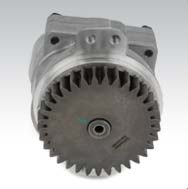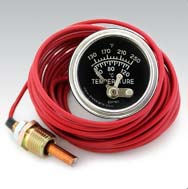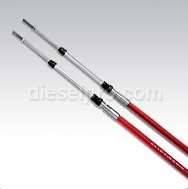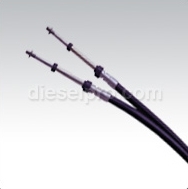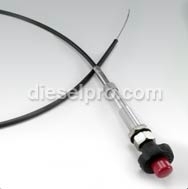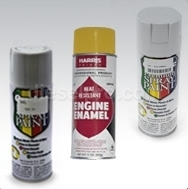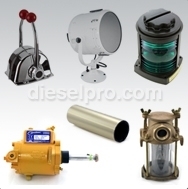The Caterpillar C13 is a 12.5-liter inline 6-cylinder diesel engine built for medium- to heavy-duty applications across multiple sectors, including power generation, industrial equipment, and marine auxiliary systems. Introduced in the early 2000s to succeed the C12, the C13 represented Caterpillar’s continued push into electronically controlled, emissions-compliant engines using ACERT (Advanced Combustion Emissions Reduction Technology). With a horsepower range of up to 520 HP, the C13 is one of the most popular mid-size powerplants in Caterpillar’s Tier 3 and early Tier 4 lineup. It became a workhorse in on- and off-highway roles before transitioning to Tier 4 Final and Stage V platforms. The C13 remains in wide use globally as a stationary, industrial, and marine auxiliary engine, particularly in markets where Tier 3 and Tier 4 Interim compliance are sufficient. Its robust design, ADEM III/IV ECM controls, and strong fuel efficiency under load make it a leading platform in both original equipment and repower markets. Specification Details Engine Configuration Inline 6-cylinder, 4-stroke diesel Displacement 12.5 Liters (763 cubic inches) Bore x Stroke 130 mm x 157 mm (5.12 in x 6.2 in) Aspiration Turbocharged and Air-to-Air Aftercooled Compression Ratio 17.0:1 Fuel System Electronic Unit Injection (EUI) or Common Rail Horsepower Range 385 – 520 HP (287 – 388 kW) @ 1,800 – 2,100 RPM Peak Torque Up to 1,750 lb-ft (2,373 Nm) Emissions Tier Tier 3 / Tier 4 Interim / EU Stage IIIA/IV Aftertreatment (where equipped) DOC + DPF or SCR (depending on version) ECM and Engine Control ADEM III / ADEM IV Cooling System Water-cooled; air-to-air aftercooling (ATAAC) Dry Weight Approx. 2,610 – 2,870 lbs (1,184 – 1,302 kg) Oil Capacity 38 – 42 liters (10 – 11 gal) Fuel Consumption ~0.34 – 0.36 lb/hp-hr depending on load and tier The Caterpillar C13 engine is a versatile and high-output platform used across a broad range of industries. With its strong torque characteristics, efficient fuel consumption, and emissions compliance, it is favored in industrial power modules, marine auxiliary setups, construction machinery, and global repower programs. The C13 is widely used in both stationary and mobile generator systems. Its reliability and emissions performance under Tier 3 and Tier 4 Interim standards make it a popular choice in prime and standby power applications. Commercial standby generator sets (300–400 kW range) Prime power gensets for construction, mining, and telecom sites Trailer-mounted rental power units Exported power systems for Latin America, Africa, and Asia Emergency backup power for data centers and hospitals Its long service intervals and remote diagnostic capabilities also make it ideal for critical infrastructure deploymentsand remote industrial operations. The C13 has been integrated into a wide variety of mid- to large-scale construction and industrial machines, offering strong torque and sustained power under continuous load. Large excavators (30–45 ton class) Articulated dump trucks Wheel loaders and dozers Underground mining vehicles Cranes and lifting equipment High-capacity air compressors and hydraulic units Its advanced ECM allows for real-time monitoring and adaptive fueling, helping reduce fuel waste and extending engine life in demanding duty cycles. While the C13 is not typically used for propulsion, it serves as a high-output marine auxiliary engine in commercial vessels that require strong and consistent auxiliary horsepower. Gensets for offshore supply vessels (300–400 kW) Deck winch power Hydraulic power units for trawl or dredge gear Refrigeration and HVAC support on factory ships Fire pumps and bilge control systems Its durability in saltwater environments and compatibility with marine-rated cooling and exhaust systems make it a valuable auxiliary solution in coastal and offshore fleets. The Caterpillar C13 is a staple engine in oilfield equipment, including fracturing pumps, blenders, and auxiliary trailers. Its high torque and strong cooling system are assets in extreme environments. Frac pump drives and coil tubing units Cement mixers and acid pumpers Wellhead support equipment Mobile power packs for pipeline construction Skid-mounted control and instrumentation trailers Its ability to deliver continuous high-output power under extreme heat, dust, and load conditions makes it a favorite in hydraulic fracturing and directional drilling. With its long production life and wide emissions tier range, the C13 remains an ideal engine for repower and export into markets not yet governed by Tier 4 Final requirements. Replacing older Cat 3406, 3176, or 3196 engines Updating Tier 2 or Tier 3 generator sets Fleet modernization without DPF or DEF requirement Export of rebuilt units for Africa, Middle East, Latin America Industrial machine repowers to extend equipment life Because it is available in multiple emissions configurations—including Tier 3 and early Tier 4i—the C13 provides repower flexibility across a range of global regulatory environments. The Caterpillar C13 engine represents a powerful and efficient solution for a wide range of heavy-duty applications. Whether used to power a construction crane, deliver auxiliary support on a marine vessel, or serve as the heart of a generator system, the C13 offers proven reliability, high torque, and fuel-efficient performance. Its broad availability in Tier 3 and Tier 4 Interim configurations makes it especially attractive to aftermarket and export markets, where emissions compliance varies and simplicity of service is crucial. As a repower engine, the C13 continues to offer a balance of modern performance and global usability—ensuring its relevance well beyond its original production run. Marine CAT C13 Coolant System Specific Component Maintenance Life
Parts For Caterpillar C13
-
Select Parts Category
 Loading...
Loading... Engine Specifications & Applications of the Caterpillar C13 Engine
Overview of the Caterpillar C13
Caterpillar C13 Engine Specifications
Applications of the Caterpillar C13 Engine
1. Power Generation
Generator Applications:
2. Industrial and Construction Equipment
Common Equipment:
3. Marine Auxiliary Use
Marine Applications:
4. Oilfield and Energy Sector Equipment
Energy Sector Use Cases:
5. Repower and Retrofit Projects
Repower Opportunities:
Conclusion
Additional Resources



 Free US Calls: 1-888-433-4735
Free US Calls: 1-888-433-4735 International: 305-545-5588
International: 305-545-5588







